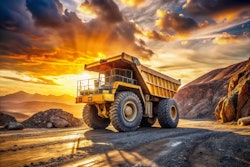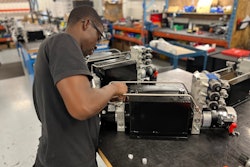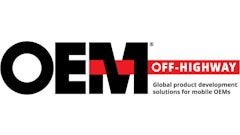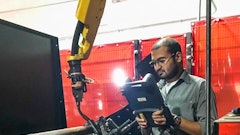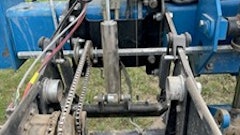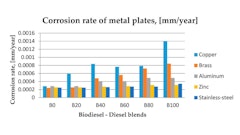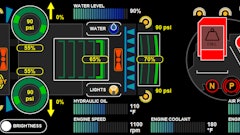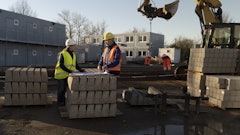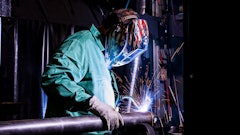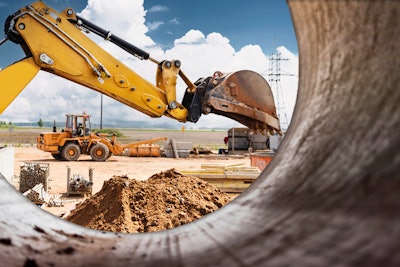
This series examines the state of the off-highway industry and analyzes the trends happening and what it might mean in the short- and long-term for the industry. Each installment also will dive deeper into one of the three key industries that are crucial to the off-highway industry: Agricultural, construction and mining.
The information used in this article has been prepared by Eli Lustgarten, president at ESL Consultants. He is an expert in the manufacturing and off-highway industries with more than 40 years of experience and has spoken at many events on manufacturing topics.
Manufacturing showing growth rates in early 2025
There has been a great deal of activity from a political standpoint in 2025 and these actions, particularly the looming tariffs, could cause seismic changes short- and long-term. Going into 2025, the U.S. economy had slowed down a bit with 2.3% growth in the fourth quarter (compared to 3.1% in the quarter prior). Concerns about the industrial markets, particularly with sticky inflation, elevated interest rates and excess inventories especially in construction and agriculture have raised concerns about gross domestic product (GDP).
That said, there are some early positive signs in 2025. U.S. manufacturing showed expansion for the first time since 2022 according to the Institute for Supply Management (ISM), which monitors the industry’s strength with their Purchasing Manufacturers’ Index (PMI). It registered 50.9 in January, the first expansion in 26 months, and a welcome sign for an industry that has been trying to find its footing through a turbulent first half of this decade.
The global manufacturing economy also showed some modest expansion in early 2025. though China and Latin America remain flat while Europe continues to struggle.
The next six months in the U.S. will likely depend on the policies emanating from the new Trump administration. This will reflect their actions toward governments spending and Tariffs. New spending priorities will determine the spending levels of the three key industrial programs: The Inflation Reduction Act, the CHIPS act and the Infrastructure Investment and Jobs Act.
Tariffs remain the big elephant in the room, however. As of this writing, the situation with tariffs on countries and commodities (such as steel) remain in flux as everyone waits for the definitions of reciprocal tariffs. Whatever happens with the tariffs the U.S. imposes will, in turn, create a response in kind. In the short-term, this means prices will go up.
The impact this has on inflation, which has cooled globally, could create a chain reaction. No one will be unaffected, of course, and regions such as Europe, which have been in a recession due to the pandemic and geo-political factors, could suffer. So, in turn, could the U.S., which will need policy actions particularly on regulation and taxes to help offset possible inflation, supply chain challenges and secondary affects.
Costs on imports and exports will change the game and those in the off-highway industry, regardless of region, will feel it. Agriculture, exports in particular, could take a nasty hit if tariffs affect what they send. This will affect commodity prices and how original equipment manufacturers (OEMs) approach what they produce for the industry. The same is true for mining and construction.
State of the key off-highway industries
A closer look at the three key off-highway industries: Agriculture, construction and mining. This will provide a closer look at what’s happening in these industries as well as the contributions the major off-highway players are providing.
State of the agricultural industry
Farm equipment sales declined sharply through the second half of 2024 in the North America. Equipment manufacturers sharply lowered production to reduce inventory, which still were at elevated levels entering 2025. First half 2025 production will be down sharply to reduce new and used inventories suggesting very weak results in the first half of the year. Equipment sales are likely to be 80 to 85% of mid-cycle level, setting the stage for a recovery when fundamentals improve.
That may be not that far away. Despite the troubled outlook, farmer sentiment continues to improve as the industry believes the current administration will bring more favorable conditions for them. Further, the recent improvements in the crop outlook reflecting downward revision in crop production and a dramatic increase in government payments (from $9.6 billion in 2024 to $42.4 billion in 2025) suggests that the first half of 2025 could quite possibly be the bottom for the farm equipment industry.
Globally, huge crops are projected in South America for soybeans and corn. Even with the recent weather fears, this could lead to major increases in supply to meet demand without having to necessarily depend on the U.S. The effect this will have on prices remains to be seen because of tariffs, but it could give South American OEMs a chance to flex their muscles a bit.
State of the construction industry
Construction spending slowed through the second half of 2024 and equipment sales had a steep drop in the fourth quarter due to weak sales and wide-spread inventory liquidation spurred by merchandizing programs and targeted discounting. Entering 2025, there is still a glut of inventory for manufacturers. There is some general optimism for 2025, but it’s more toward the second half of the year as OEMs work through the inventory issue they are currently going through. OEMs also project construction activity to be relatively flat globally in 2025 with North America likely in decline. This suggests the first half of 2025 will see lower sales to end users and significant inventory liquidation. Construction equipment forecasts focus on a 5 to 10% decline in NA and flat +/- 5% worldwide.
State of the mining industry
Major mining companies are dedicated to improving their bottom line, saving energy, and lowering costs with a focus on supporting domestic supply chains, resource security for critical materials, and optimizing to improve efficiency, emphasize cost savings and investing in automation. With mining markets expected to soften through 2024 into 2025, it was not surprising the sector reported declining sales to end 2024, reflecting lower sales to end users and inventory liquidation. With inventory levels still elevated, the weakness will continue through the first half of 2025.
Global projects appear to be peaking and slowing a bit. Industry forecasts suggest mining projects and spending in 2025 are moving sideways but at a relatively high level.
A closer look at the construction industry
There is likely to be a change in the mix of construction spending as the Trump Administration unfolds its economic objectives. This will have immediate effects, though some won’t be felt until further down the road.
Construction sectors likely to benefit from the changes in economic policies include data centers, energy projects for artificial intelligence (AI), manufacturing projects for onshoring, and infrastructure such as roads and bridges. Much of this was already in place due to the policies enacted by the Biden Administration, but there could be a more renewed focus, particularly on infrastructure, which is always a popular focus regardless of who is in charge. Given the state of bridges, railways and the like, it should be.
The construction sectors with a more difficult outlook could include alternative energy such as wind and solar, high-speed rail, electric vehicle (EV) and battery facilities; water projects will likely favor a roll back of regulations and more control given to states. Even so, alternative energy and hybrid projects will remain a priority for OEMs looking at the long game.
At the Perkins press conference in London, there was a strong emphasis on hybridization and working with alternate fuels. While internal combustion engines (ICE) and diesel will remain the standard, Perkins is emphasizing a hybrid approach where different fuels can be used in tandem with diesel to reduce overall costs. Project Coeus is an example of working with other companies and universities to find a better solution and they will be displaying their findings at auma 2025 in Munich.
The mood and feeling of the construction equipment manufacturers right now is cautious because of excess inventory and a general wait-and-see approach. That said, the construction industry has shown its resilience, and most trade associations are more optimistic believing the second half of 2025 and 2026 will be good for the industry overall.
For example, Dodge Construction Network and Construction Connect both forecast increased construction starts in 2025 up to 9%.
During an Association of Equipment Manufacturers (AEM) webinar, Tom Hopgood, an economist for GlobalData, said that overall the world construction market is characterized by a lack of demand. Everyone, Hopgood said, is feeling the effects of the previous inflationary period. He did say the world construction industry should reach growth rates of 4% by 2028, with a lot of the activity and growth coming from Asia— particularly China and India. The U.S. won’t be a slouch, either, he said.
The key issues to watch for the construction industry are interest rates, a potential shift in priorities by the Trump Administration and labor availability. Hopgood said the deportations on undocumented workers could cause problems because the construction and agriculture industries, in particular, depend on them. He warned this could create a real drag on the industries, which are trying to find their footing. The other unknown is the impact of tariffs, particularly on construction costs. If there are tariffs on steel and other building products and commodities, this could create quite a major impact. Recent talks of reciprocal tariffs could, again, create a chain reaction that cause higher costs. This, coupled with fewer available workers, could send the construction industry into a tailspin.
OEMs are resilient and they will continue to endure, but they will have to adjust and be flexible. The industry can change overnight as this decade has proven. Companies working for the long-term as well as the present are the ones that will not only endure, but thrive despite everything happening around them.




